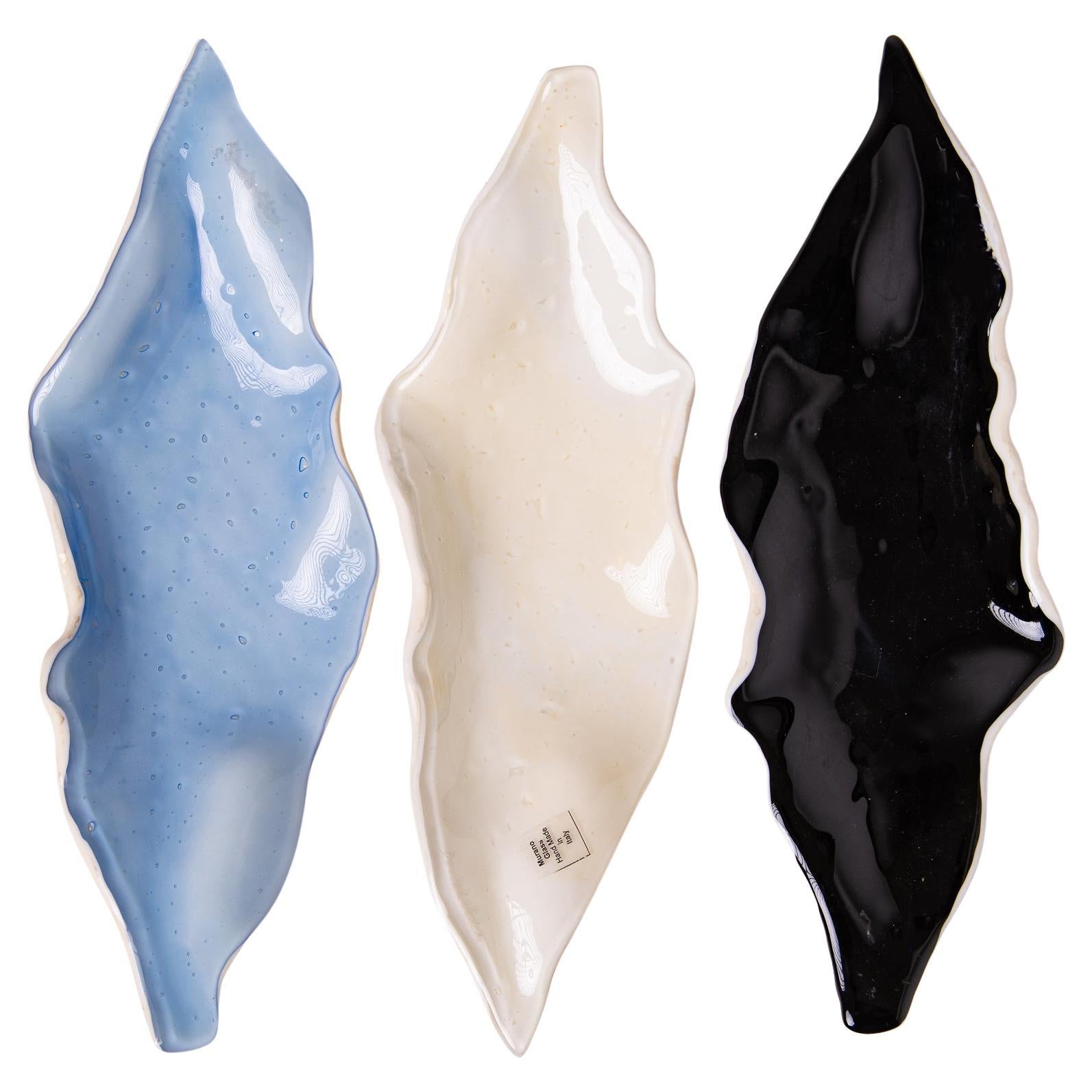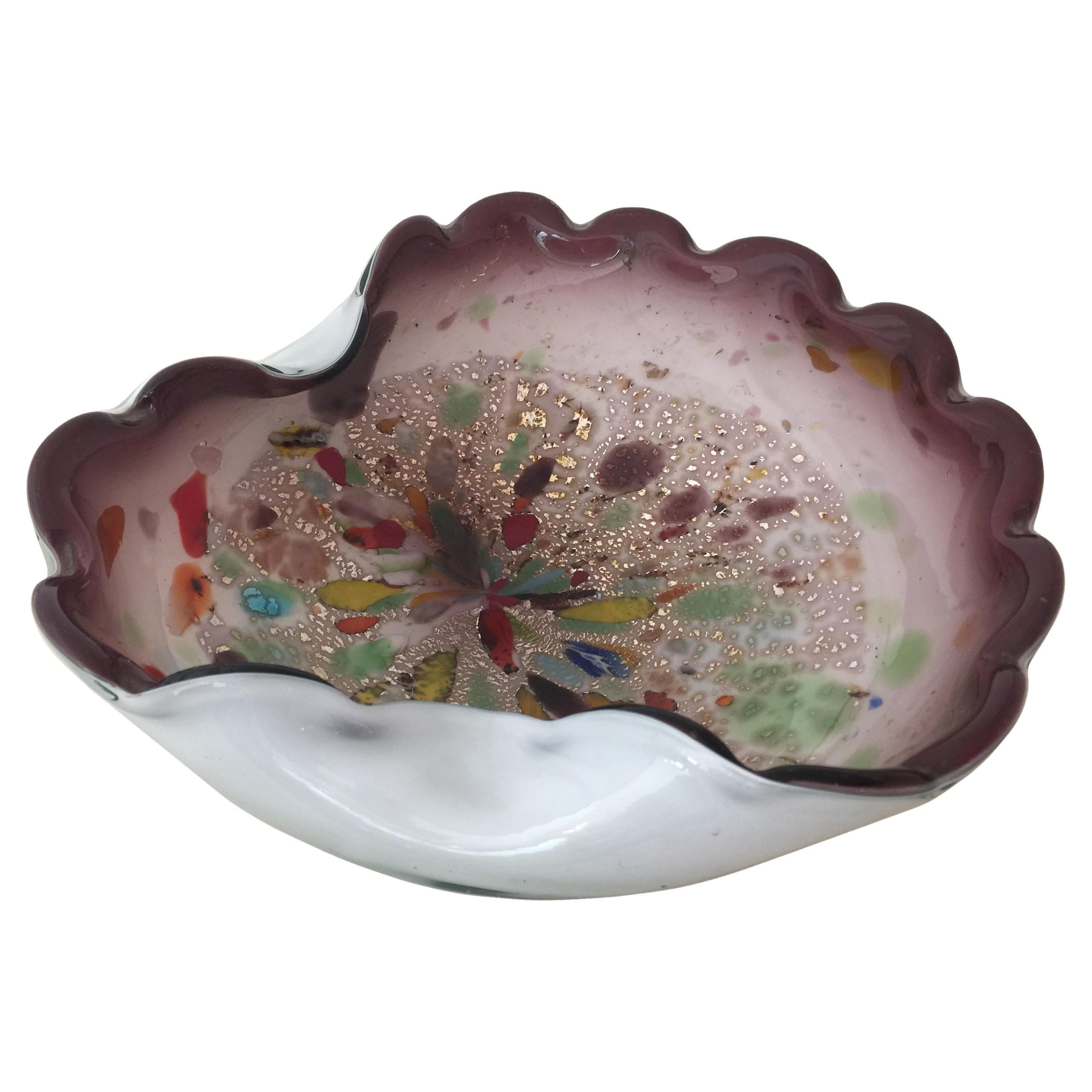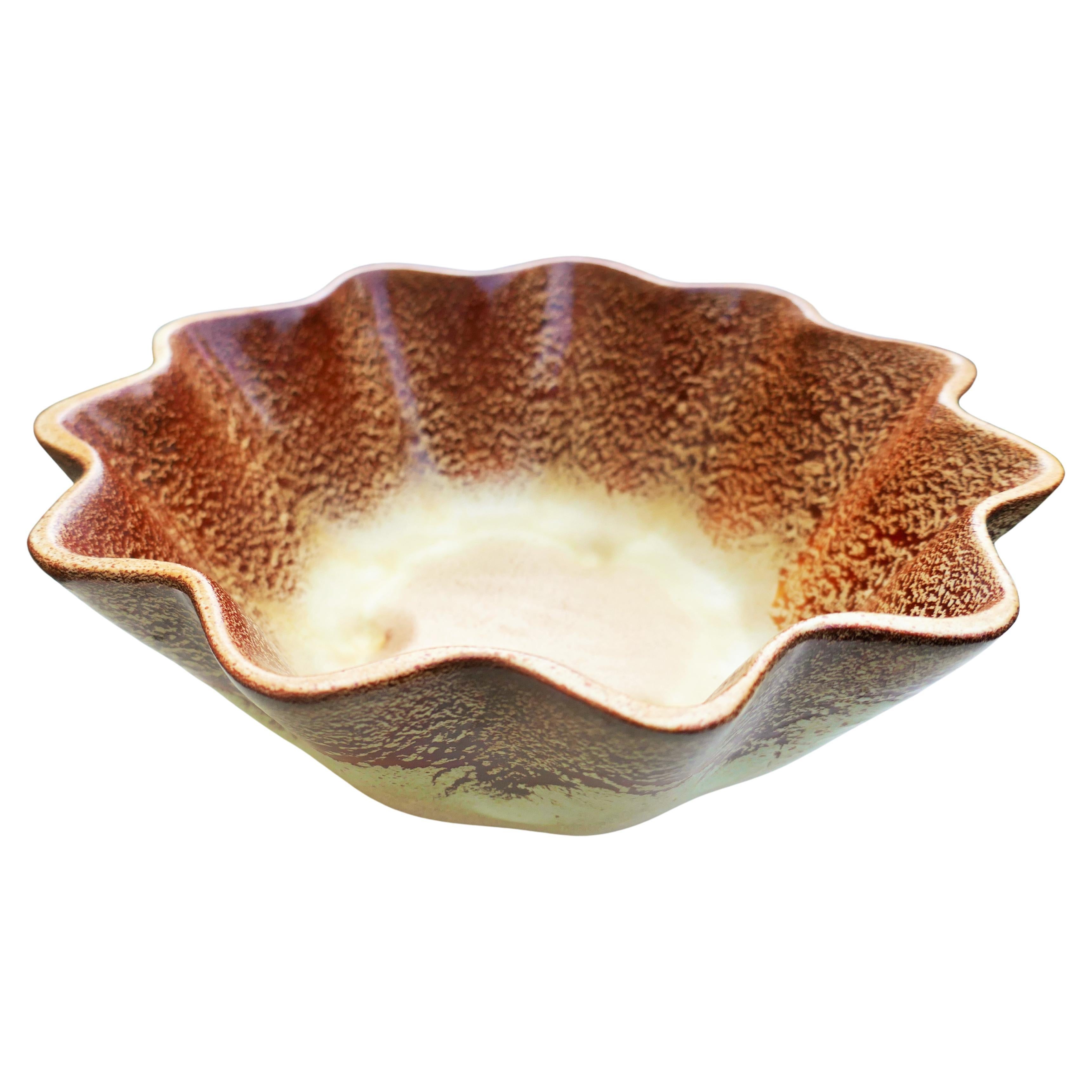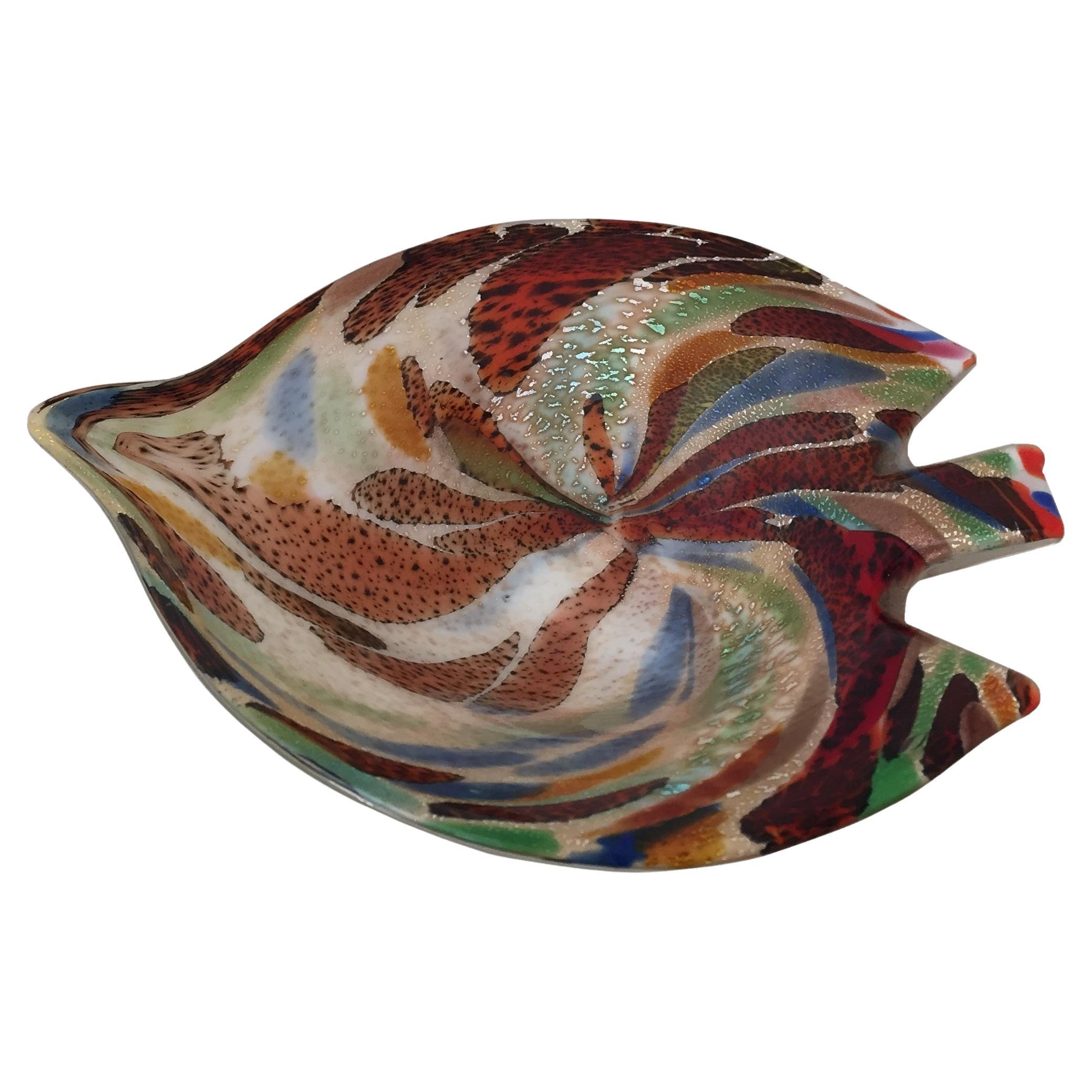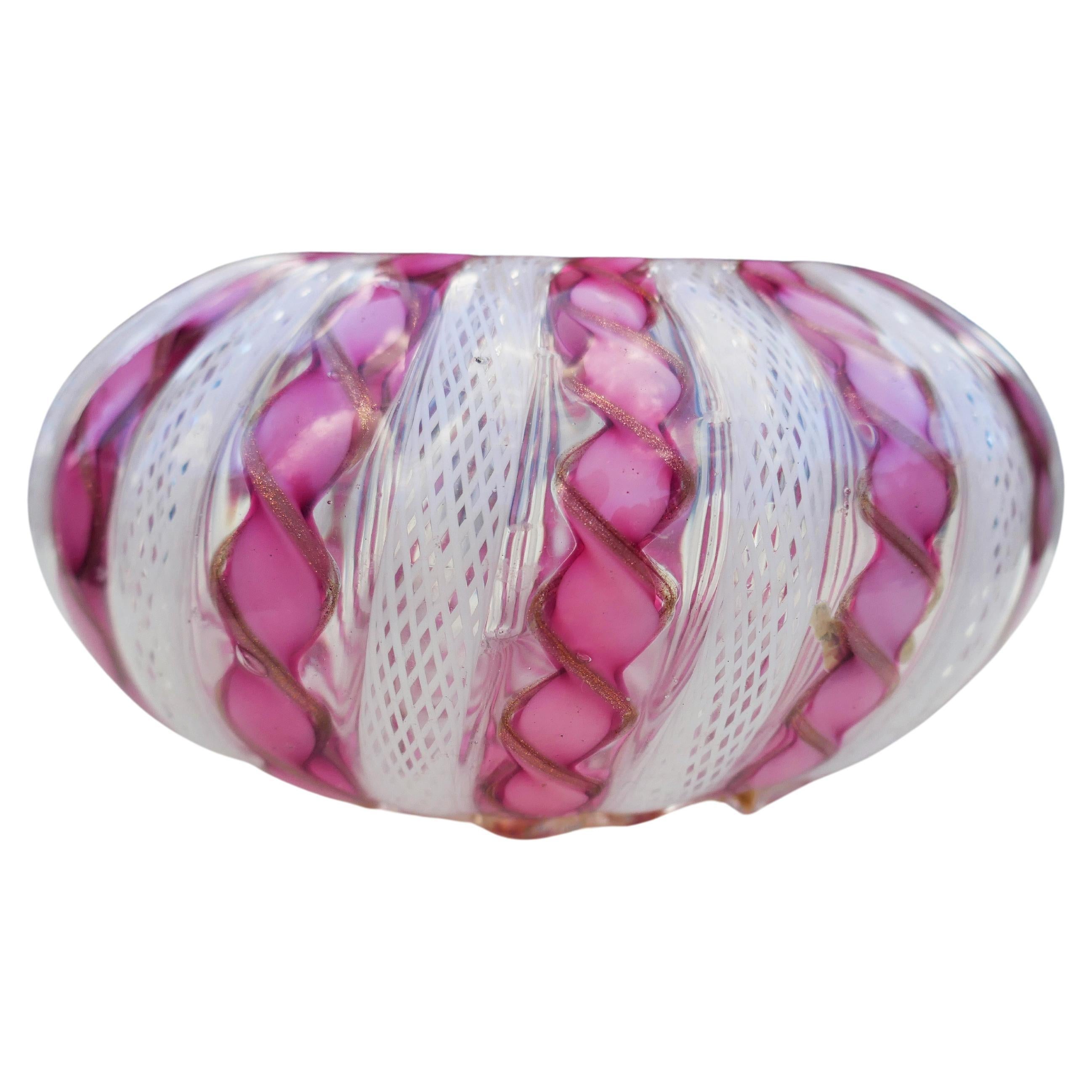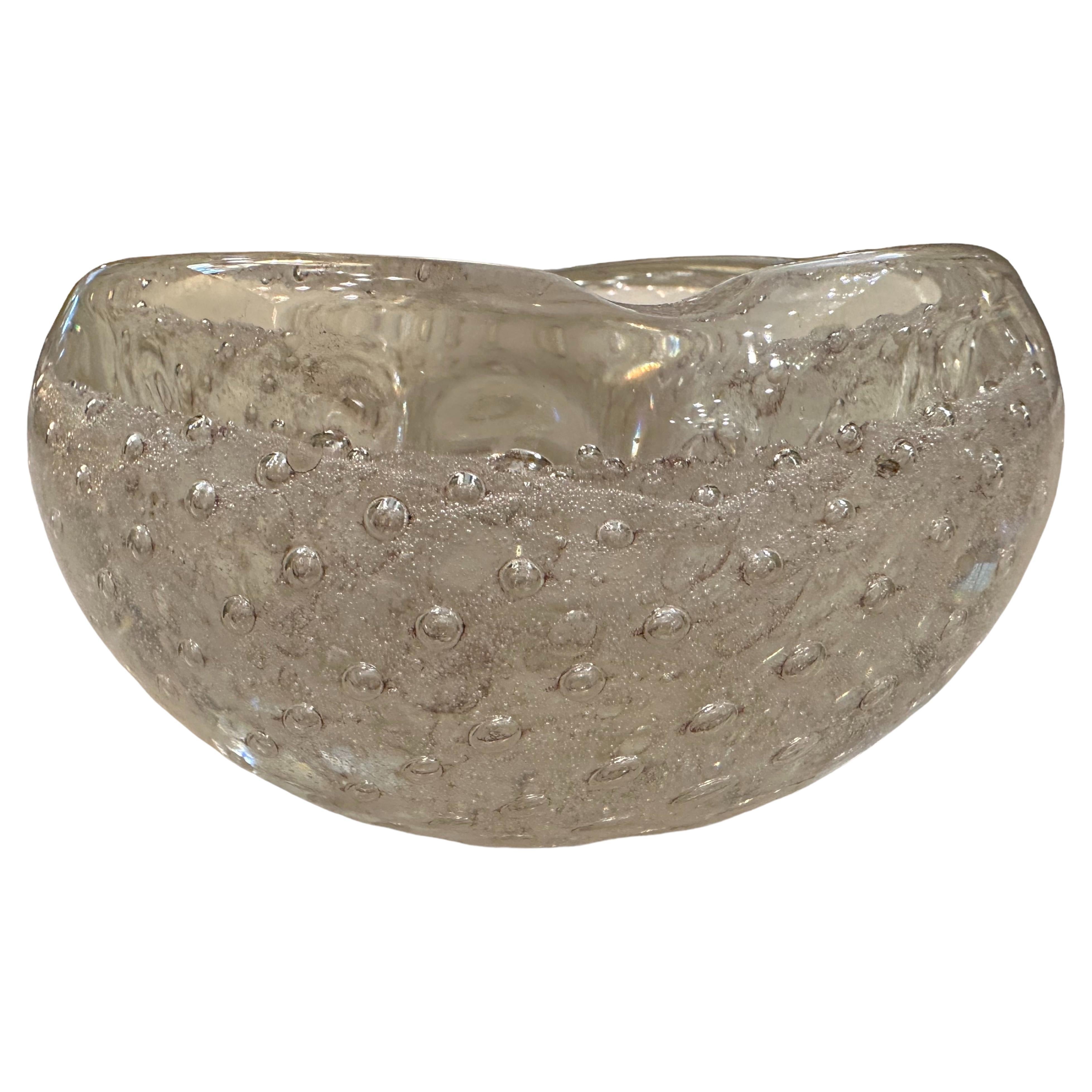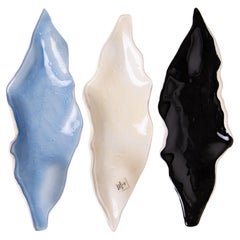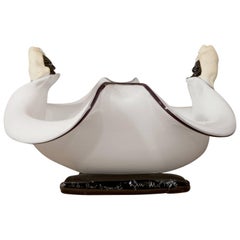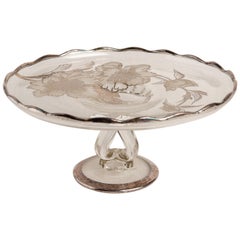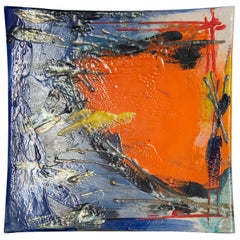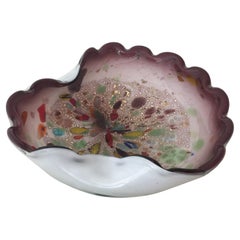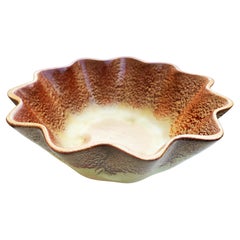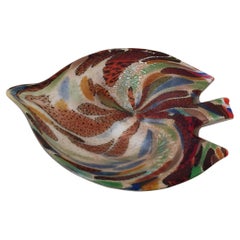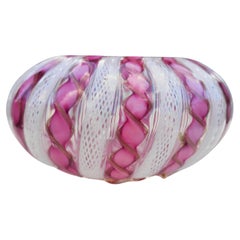Items Similar to Venetian Glass Composition
Want more images or videos?
Request additional images or videos from the seller
1 of 18
Venetian Glass Composition
$2,149.65per set
£1,589.60per set
€1,800per set
CA$2,952.75per set
A$3,283.29per set
CHF 1,718.86per set
MX$40,105.95per set
NOK 21,599.16per set
SEK 20,318.34per set
DKK 13,705.61per set
About the Item
Large Venetian glass composition with beautiful modern colors: perfect as a centerpiece.
Sizes: ivory cm. 58x56xh.6.
brown cm. 45x44 x h.6,5
sky blue cm 32,7x30 x h.5
ivory bowl diameter cm. 15,5 x h.9
brown little cup : diameter cm8 x h. 5.
ref. O/5970
- Creator:Vetrofuso di Daniela Poletti 1 (Cabinetmaker)
- Dimensions:Height: 2.37 in (6 cm)Width: 22.84 in (58 cm)Depth: 22.05 in (56 cm)
- Sold As:Set of 5
- Style:Other (In the Style Of)
- Materials and Techniques:
- Place of Origin:
- Period:
- Date of Manufacture:2000 about
- Condition:
- Seller Location:Alessandria, IT
- Reference Number:Seller: O/5970 fino a 5974.1stDibs: LU1379244681212
About the Seller
4.9
Vetted Professional Seller
Every seller passes strict standards for authenticity and reliability
Established in 1984
1stDibs seller since 2015
371 sales on 1stDibs
Typical response time: 9 hours
- ShippingRetrieving quote...Shipping from: Alessandria, Italy
- Return Policy
Authenticity Guarantee
In the unlikely event there’s an issue with an item’s authenticity, contact us within 1 year for a full refund. DetailsMoney-Back Guarantee
If your item is not as described, is damaged in transit, or does not arrive, contact us within 7 days for a full refund. Details24-Hour Cancellation
You have a 24-hour grace period in which to reconsider your purchase, with no questions asked.Vetted Professional Sellers
Our world-class sellers must adhere to strict standards for service and quality, maintaining the integrity of our listings.Price-Match Guarantee
If you find that a seller listed the same item for a lower price elsewhere, we’ll match it.Trusted Global Delivery
Our best-in-class carrier network provides specialized shipping options worldwide, including custom delivery.More From This Seller
View AllVenetian Glass Bowls
By Vetrofuso di Daniela Poletti 1
Located in Alessandria, Piemonte
Three Venetian glass bowls: blue, black and ivory.
Also see the composition of large glass plates with the same colors.
ref. O/6371.
Category
21st Century and Contemporary Italian Other Glass
Materials
Art Glass
$716 / set
Murano Glass Signed Sculpture Rare Centerpiece
Located in Alessandria, Piemonte
Smart Venetian centerpiece, signed Signoretto and dated 1980 : very important unique piece !
Handles: Two moors black heads with turbans.: it's a ...
Category
Vintage 1980s Italian Moorish Glass
Materials
Art Glass
Silver Overlay Glass Patisserie Pedestal Stand
Located in Alessandria, Piemonte
Elegant patisserie stand with flowers printed in silver on the glass: named "overlay", classical American object for the table service.
O/. 1770.
Category
Mid-20th Century American Aesthetic Movement Platters and Serveware
Materials
Art Glass
Modern Art Italian Ceramic Dish for Wall or Table Centerpiece
By Antonio Zaccarella
Located in Alessandria, Piemonte
Spectacular Italian "ceramic Raku" dish, for wall or table, unique piece, from a private collection
The Raku is a long interesting procedure in very high temperatures and it's very ...
Category
Late 20th Century Italian Other Decorative Dishes and Vide-Poche
Materials
Ceramic
Antique English Plates for a Wall Composition
By Royal
Located in Alessandria, Piemonte
Some antique English plates for a pleasant wall composition with its nice decoration.
There are some restorations on some plates, but not clearly...
Category
Antique Mid-19th Century English Other Porcelain
Materials
Porcelain
$1,074 / set
Venetian Glass and Gold Bowl with Handles
Located in Alessandria, Piemonte
nr. 2110 - Vintage beautiful glass and gold bowl with handles by Morise : cabinet maker in Venice.
Festoons in pure gold, handles with relief details...
Category
Late 20th Century European Other Vases
Materials
Glass
You May Also Like
Murano, 1930, Italian, Attributed to Fratelli Toso, Technical Avventurina
By Fratelli Toso
Located in Ciudad Autónoma Buenos Aires, C
Murano
Technical Avventurina :
We have specialized in the sale of Art Deco and Art Nouveau and Vintage styles since 1982. If you have any questions we are at your disposal.
Fratelli Toso, Venice
One of the oldest glass factories established in Murano, Fratelli Toso was founded in 1854 by six brothers who loved the art of glassmaking. With over 150 years of experience in the field, the Toso family improved their techniques and nowadays are one of the top award-winning manufacturers of Murano glass.
Technical Avventurina :
Avventurina is a Murano glass-making technique developed on Murano island in the 17th century. I was first mentioned in a document dating from 1614 as "a kind of stone with gilt stars inside", at which point it already mesmerized people with the unusual and attractive look. The technique owes its name to the fact that its discovery happened by chance thanks to a lucky coincidence, when a glass artisan is said to have accidentally dropped some metal shavings into the glass mixture. Italians say it happened "all'avventura", which in Italian means "by chance".
The first documented recipe for the technique dates from 1644, when Murano master glassmaker Giovanni Darduin described how Avventurina glass should be created. The recipe involves adding various metal oxides such as copper and iron to the hot glass mixture, which will cause tiny particles of the metals to crystallize as the glass mixture cools off.
Complicating the process, for such crystallization to occur the furnace had to get fully extinguished, and the metal particles would slowly separate from the glass base over a few days during the natural cooling of the glass. This was a very difficult process from a logistical perspective, since every time a glass furnace got extinguished it caused work to be paused, and re-igniting it was quite a big process, as it took time to fully heat it to the desired temperature.
As industrial revolution set foot on Murano in the nineteenth century, the process got a remake. Large volumes of fine Avventurina paste were made and then skillfully stretched into glass canes, which were then re-melted for jewelry-making under a small flame, or for glass blowing. This Avventurina paste received worldwide acclaim and re-ignited the fame of Murano Glass workshops due to its use in Salviati mosaics...
Category
Vintage 1930s Italian Art Deco Centerpieces
Materials
Murano Glass
Ceramic centerpiece by Roberto Rigon
By Bitossi, Roberto Rigon, Bertoncello, Flavia Montelupo
Located in Lugo, IT
Ceramic centerpiece by Roberto Rigon.
Good condition.
Thanks
Category
Vintage 1970s Italian Modern Ceramics
Materials
Ceramic
Murano, 1930, Italian, Attributed to Fratelli Toso Technical Avventurina
By Fratelli Toso
Located in Ciudad Autónoma Buenos Aires, C
Murano
Technical Avventurina :
We have specialized in the sale of Art Deco and Art Nouveau and Vintage styles since 1982. If you have any questions we are at your disposal.
Pushing the button that reads 'View All From Seller'. And you can see more objects to the style for sale.
Fratelli Toso, Venice
One of the oldest glass factories established in Murano, Fratelli Toso was founded in 1854 by six brothers who loved the art of glassmaking. With over 150 years of experience in the field, the Toso family improved their techniques and nowadays are one of the top award-winning manufacturers of Murano glass.
Technical Avventurina :
Avventurina is a Murano glass-making technique developed on Murano island in the 17th century. I was first mentioned in a document dating from 1614 as "a kind of stone with gilt stars inside", at which point it already mesmerized people with the unusual and attractive look. The technique owes its name to the fact that its discovery happened by chance thanks to a lucky coincidence, when a glass artisan is said to have accidentally dropped some metal shavings into the glass mixture. Italians say it happened "all'avventura", which in Italian means "by chance".
The first documented recipe for the technique dates from 1644, when Murano master glassmaker Giovanni Darduin described how Avventurina glass should be created. The recipe involves adding various metal oxides such as copper and iron to the hot glass mixture, which will cause tiny particles of the metals to crystallize as the glass mixture cools off.
Complicating the process, for such crystallization to occur the furnace had to get fully extinguished, and the metal particles would slowly separate from the glass base over a few days during the natural cooling of the glass. This was a very difficult process from a logistical perspective, since every time a glass furnace got extinguished it caused work to be paused, and re-igniting it was quite a big process, as it took time to fully heat it to the desired temperature.
As industrial revolution set foot on Murano in the nineteenth century, the process got a remake. Large volumes of fine Avventurina paste were made and then skillfully stretched into glass canes, which were then re-melted for jewelry-making under a small flame, or for glass blowing. This Avventurina paste received worldwide acclaim and re-ignited the fame of Murano Glass workshops due to its use in Salviati mosaics...
Category
Vintage 1930s Italian Art Deco Centerpieces
Materials
Murano Glass
Murano reticello zanfirico glass bowl
By Salviati, Venini, Barovier, Aureliano Toso, Cenedese
Located in Lugo, IT
Murano production glass bowl.
Good conditions.
Thank you
Category
Vintage 1950s Italian Modern Serving Bowls
Materials
Murano Glass
Murano Pelegoso, 1940, Italian, Technique: Bullicante, Attributed to Venini
By Paolo Venini
Located in Ciudad Autónoma Buenos Aires, C
Murano
Technical Bullicante
We have specialized in the sale of Art Deco and Art Nouveau and Vintage styles since 1982. If you have any questions we are at your disposal.
Carlo Scar...
Category
Vintage 1940s Italian Art Deco Centerpieces
Materials
Murano Glass
Murano 1930, Italian, Technical Avventurina
Located in Ciudad Autónoma Buenos Aires, C
Murano.
With silver applications.
We have specialized in the sale of Art Deco and Art Nouveau and Vintage styles since 1982. If you have any questions we are at your disposal.
Pushing the button that reads 'View All From Seller'. And you can see more objects to the style for sale.
Technical Avventurina :
Avventurina is a Murano glass-making technique developed on Murano island in the 17th century. I was first mentioned in a document dating from 1614 as "a kind of stone with gilt stars inside", at which point it already mesmerized people with the unusual and attractive look. The technique owes its name to the fact that its discovery happened by chance thanks to a lucky coincidence, when a glass artisan is said to have accidentally dropped some metal shavings into the glass mixture. Italians say it happened "all'avventura", which in Italian means "by chance".
The first documented recipe for the technique dates from 1644, when Murano master glassmaker Giovanni Darduin described how Avventurina glass should be created. The recipe involves adding various metal oxides such as copper and iron to the hot glass mixture, which will cause tiny particles of the metals to crystallize as the glass mixture cools off.
Complicating the process, for such crystallization to occur the furnace had to get fully extinguished, and the metal particles would slowly separate from the glass base over a few days during the natural cooling of the glass. This was a very difficult process from a logistical perspective, since every time a glass furnace got extinguished it caused work to be paused, and re-igniting it was quite a big process, as it took time to fully heat it to the desired temperature.
As industrial revolution set foot on Murano in the nineteenth century, the process got a remake. Large volumes of fine Avventurina paste were made and then skillfully stretched into glass canes, which were then re-melted for jewelry-making under a small flame, or for glass blowing. This Avventurina paste received worldwide acclaim and re-ignited the fame of Murano Glass workshops due to its use in Salviati mosaics...
Category
Vintage 1930s Italian Art Deco Centerpieces
Materials
Silver, Gold
More Ways To Browse
Large Italian Centerpiece Bowl
Venetian Glass Hand Painted
Ivory Bowl
Ivory Cup
Prata Wolff
Ron Pearson
Royal Tettau On Sale
Sabine Marcelis Lazy Susan
Tiffany Silver Frog
Toni Martina
Willi Russ
Dorflinger Kalana Lily
Editions Milano On Sale
Lenk Austria
Palm Tree Cake Stand
Richard Cipolla
Thomas Weir Ring
72 Console
